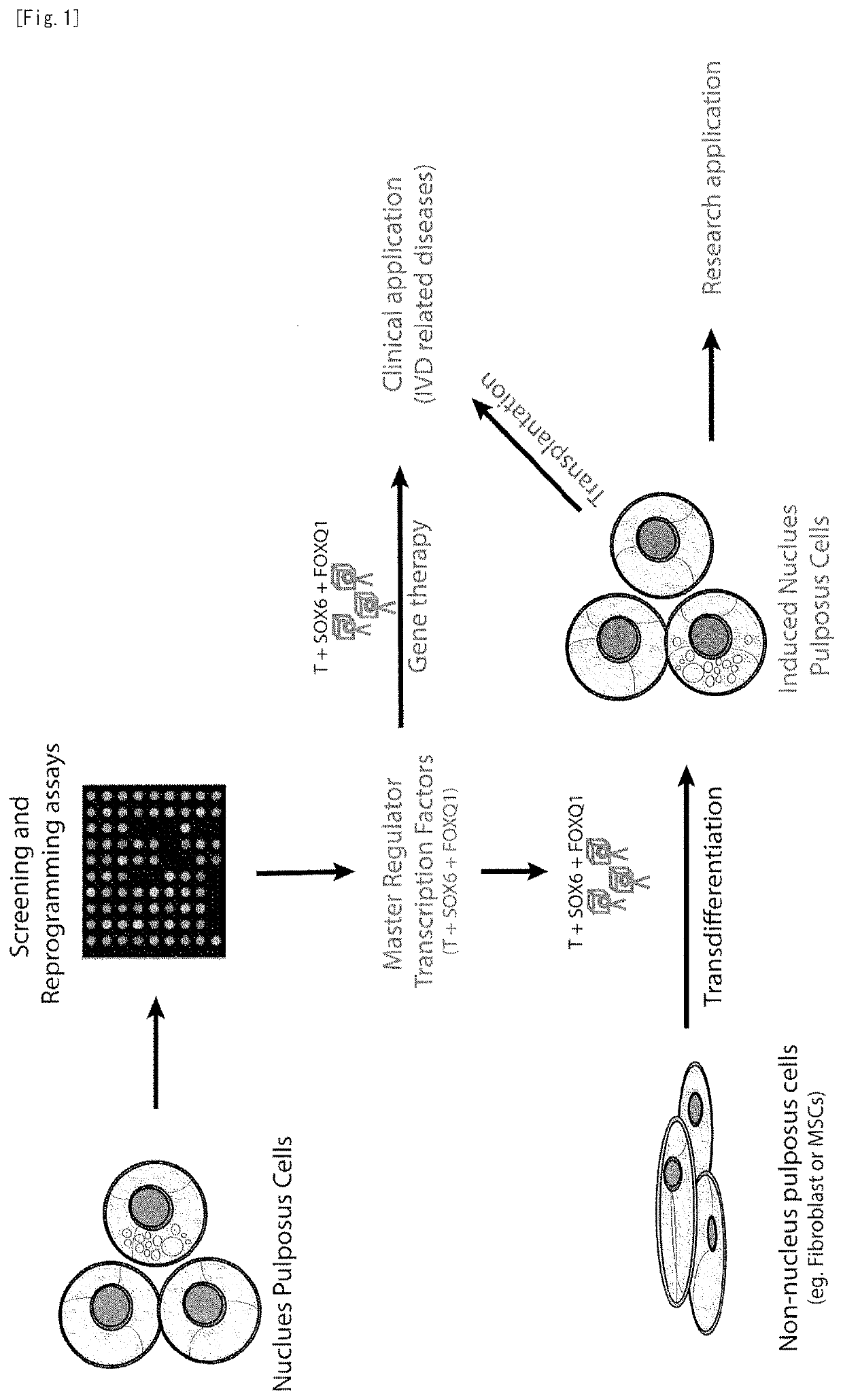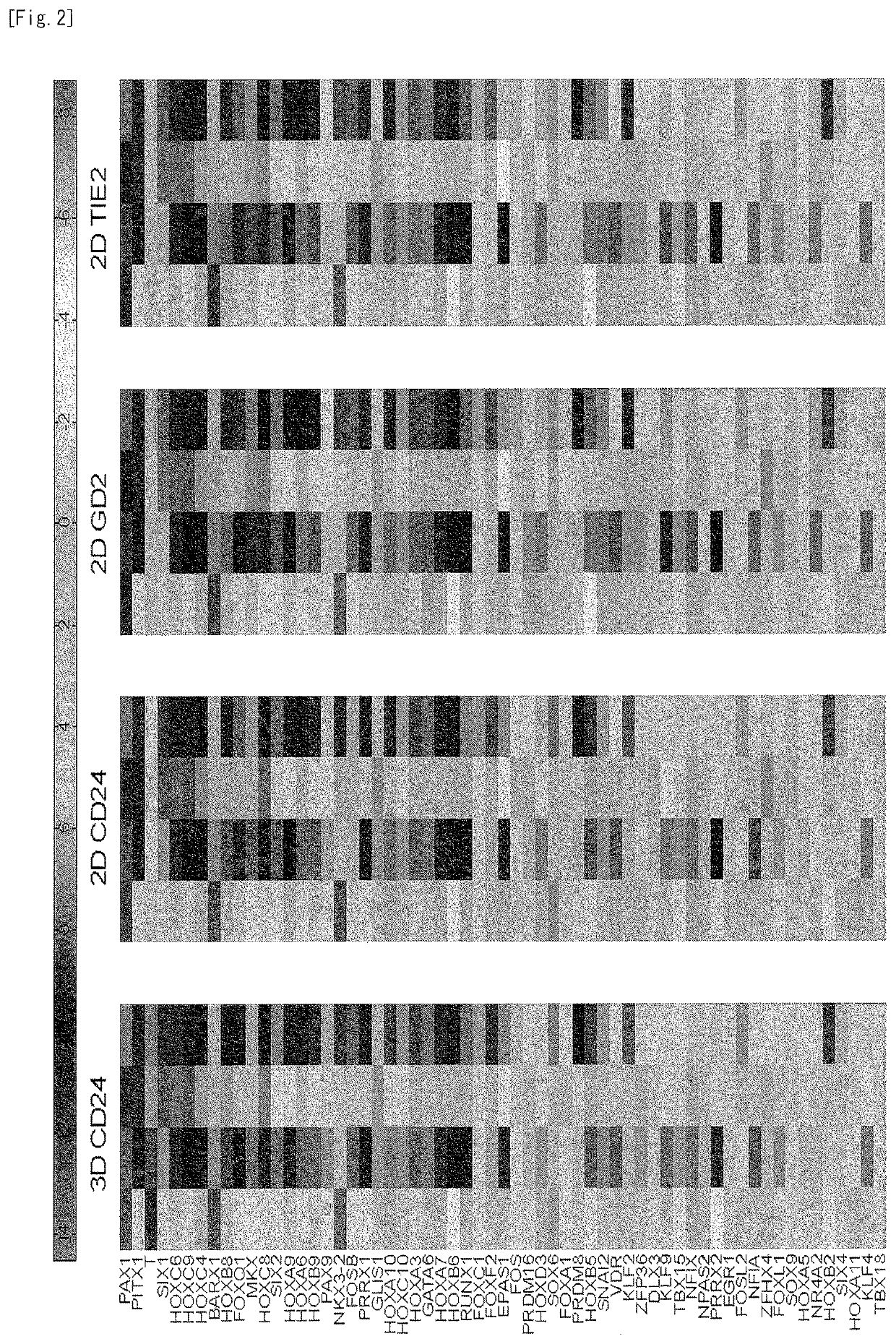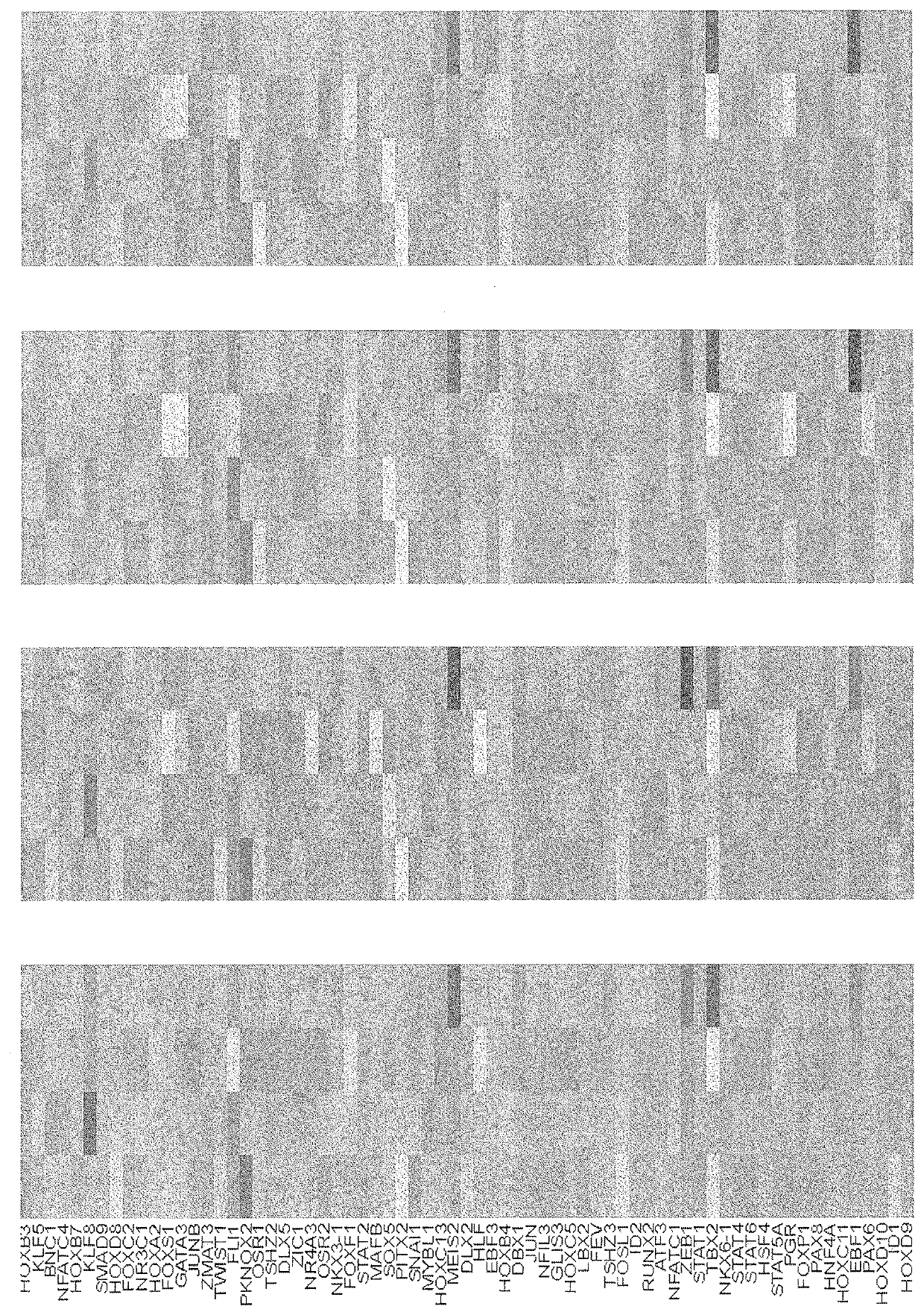Differentiation inducer containing nucleus pulposus cell master regulator transcription factors, method for producing induced nucleus pulposus cells, and use of induced nucleus pulposus cells
a technology of nucleus pulposus and master regulator, which is applied in the directionpeptides/protein ingredients, peptides, etc., can solve the problems of poor cell phenotype, no clinically effective treatment that enables recovery from degenerative state, and large social and economic burden, etc., to achieve the effect of improving the survival rate of skeletal/connective tissue cells, reducing the risk of skeletal muscle damage, and extending the life cycl
- Summary
- Abstract
- Description
- Claims
- Application Information
AI Technical Summary
Benefits of technology
Problems solved by technology
Method used
Image
Examples
examples
(1) Human Nucleus Pulposus Tissue
[0121]In conducting this study, collection and use of human tissue samples were approved by the institutional ethics review committee of Tokai University Hospital. In addition, surgically excised tissue materials were obtained only from patients which have provided their informed consent.
(2) Cell Separation and Culture
[0122]A human intervertebral disc tissue collected was macroscopically examined to separate the nucleus pulposus tissue from fibrous tissue and other tissue structures. Subsequently, the nucleus pulposus tissue was incised into about 1 cm3 sections. The human nucleus pulposus tissue was further digested with TrypLE express (Gibco, USA) at 37° C. for 1 hour. Thereafter, the first digested tissue was transferred to 0.25 mg / mL collagenase-P (F. Hoffmann-La Roche, Ltd., Switzerland) for 2 hours. The suspension obtained was filtered with a 100 μm cell strainer, washed twice with 10% FBS-added αMem (Dulbecco, USA), and inoculated at a cell de...
PUM
 Login to View More
Login to View More Abstract
Description
Claims
Application Information
 Login to View More
Login to View More - R&D
- Intellectual Property
- Life Sciences
- Materials
- Tech Scout
- Unparalleled Data Quality
- Higher Quality Content
- 60% Fewer Hallucinations
Browse by: Latest US Patents, China's latest patents, Technical Efficacy Thesaurus, Application Domain, Technology Topic, Popular Technical Reports.
© 2025 PatSnap. All rights reserved.Legal|Privacy policy|Modern Slavery Act Transparency Statement|Sitemap|About US| Contact US: help@patsnap.com



